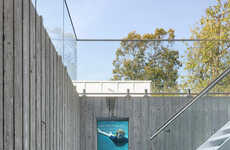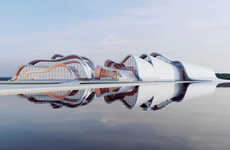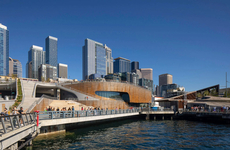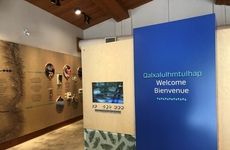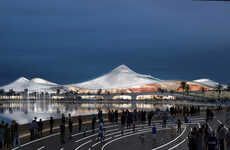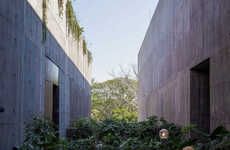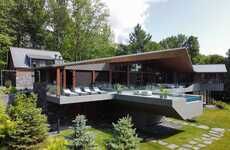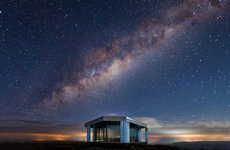
The UBC Aquatic Center Has Facilities for Both Olympians and Students
Joey Haar — April 5, 2018 — Art & Design
References: archdaily
As Canada's foremost training ground for Olympic swimmers, the UBC Aquatic Center is an important aspect of the country's athletics. In designing the new facility, MJMA and Acton Ostry Architects thus needed to create something that would have the state-of-the-art training necessary for high-performance athletics alongside the necessities for the university's student body.
The UBC Aquatic Center manages to harmonize those needs. Not only does it have a 51-meter FINA basin and a 25-meter diving well, but it also has a warm water leisure basin. The space is thus ideal for both the focused training of Olympic athletes and the activities of students and young families who live around the facility in Vancouver's Lower Mainland.
By combining elite performance with daily community use, the architects show the power of inclusive design.
Image Credit: Ema Peter
The UBC Aquatic Center manages to harmonize those needs. Not only does it have a 51-meter FINA basin and a 25-meter diving well, but it also has a warm water leisure basin. The space is thus ideal for both the focused training of Olympic athletes and the activities of students and young families who live around the facility in Vancouver's Lower Mainland.
By combining elite performance with daily community use, the architects show the power of inclusive design.
Image Credit: Ema Peter
Trend Themes
1. Inclusive Design - Designing spaces that cater to both high-performance athletes and community members, creating a more inclusive experience.
2. Multipurpose Facilities - Creating aquatic centers that can accommodate both training for elite athletes and recreational activities for the community.
3. Community-driven Design - Designing facilities that consider the needs and activities of the local community while still meeting the requirements of high-level training.
Industry Implications
1. Sports Training Facilities - Sports training facilities can explore the concept of inclusive design to cater to both professional athletes and the local community.
2. Recreation Centers - Recreation centers can incorporate multipurpose facilities to provide a comprehensive experience for both athletes and community members.
3. Architectural Design - Architectural firms can focus on community-driven design, creating spaces that meet the needs of various user groups while maintaining functionality.
1.7
Score
Popularity
Activity
Freshness


